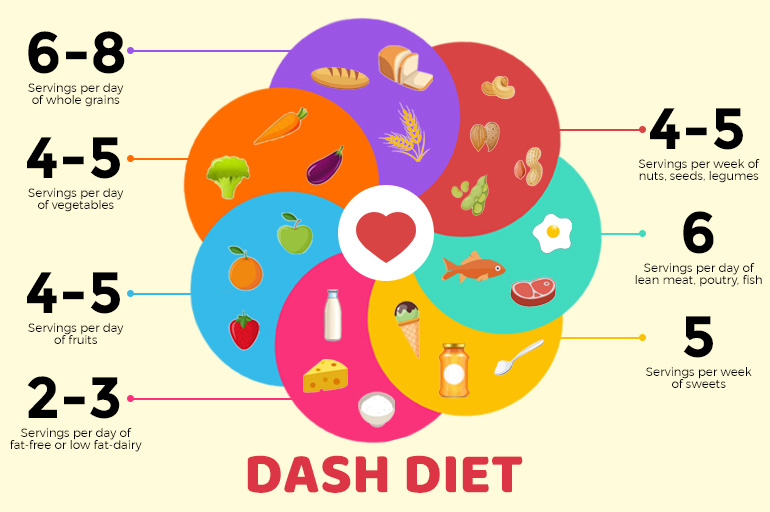Trending diets of today and how to incorporate them in your life: DASH
SEPTEMBER 02, 2019

Dietary approaches to stop hypertension or ‘DASH’, is a diet for people who aim to treat high blood pressure through diet instead of medication. This diet was created after researchers noticed that high blood pressure was less common in people who followed a plant-based diet instead of one that is heavy on meat. Such diets are designed to be low in salt, added sugars and fats. Let us take a closer look at the benefits of the DASH diet and learn how to incorporate it into our daily routine.
What to eat
Unlike most popular diets of today, the DASH diet does not restrict you to healthy snacks or strict calorie counting. Instead, it recommends specific servings of different food groups. These recommended daily servings are:
- 7-8 servings of grains
- 4-5 servings of vegetables
- 4-5 servings of fruits
- 2-3 servings of low-fat or fat-free dairy products
- 2 or fewer daily servings of meat, poultry and fish
- 4-5 weekly servings of nuts, seeds and beans
- Less than 5 servings per week of sweets
Keep your salt intake between 1,500 and 2,300 milligrams per day. Apart from meat and salt, it is also important to limit your sugar and alcohol consumption.
Benefits of the DASH diet
Originating in the 1990s the DASH diet and its benefits have been studied extensively. Some scientifically backed benefits of the diet are:
- Lowers blood pressure
- Reduces cholesterol levels
- Lowers the risk of heart disease
- Lowers risk of diabetes
- Leads to a longer and healthier life
Disadvantages of the DASH Diet
- The diet can get expensive as fresh fruits cost more and tend to spoil faster than store-bought processed foods.
- Weight loss on this diet is slow and not a priority which makes it less appealing to many youngsters.
- Diets these days have support groups, meal plans and even services to deliver food. The DASH diet is not a commercial diet, once you have figured out your daily servings you are on your own.
- While the DASH diet does not have calorie counting, you do need to measure portions and count servings of foods that fall under different categories. This process can be tedious and difficult to stick to like calorie counting.
These drawbacks can make the DASH diet feel intimidating to follow for people who are new to it.
Now that we know the advantages and the disadvantages of the DASH diet let us learn how to learn from its principles and adapt it into our daily lives. To make your diet more DASH-like you need to keep the following things in mind:
- Eat more vegetables and fruits
- Choose lean protein sources like beans, lentils and nuts
- Swap refined grains for whole grains
- Limit your intake of foods high in sugar and salt
The bottom line is that the DASH diet is the most effective diet to reduce high blood pressure and hypertension. The change can be as simple as swapping salty tortilla chips for whole grain chips, yet this simplicity is why the DASH diet is the most effective way of combating hypertension and leading a healthier and happier life today.

